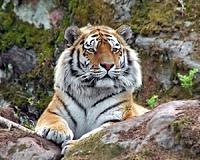 |
Oak Ridge, TN (SPX) Apr 13, 2011 A newly sequenced bacterial genome from a team led by the Department of Energy's Oak Ridge National Laboratory could contain clues as to how microorganisms produce a highly toxic form of mercury. Methylmercury, a potent human neurotoxin, appears in the environment when certain naturally occurring bacteria transform inorganic mercury into its more toxic cousin. Few bacterial species are capable of this conversion, and exactly how the transformation takes place has been a matter of debate for decades. "What is not known are the genes or the proteins that allow these bacteria to mediate the transformation," said ORNL's Steven Brown, who led a research team to sequence the genome of a bacterium in the Desulfovibrio genus that is capable of methylating mercury. The new genome, sequenced at the California-based DOE Joint Genome Institute (JGI) and published in the Journal of Bacteriology, lays the foundation for future research to examine the little understood mechanisms behind the production of methylmercury. Desulfovibrio desulfuricans strain ND132 is an organism that thrives in sediments and soils without oxygen - the places in lakes, streams and wetlands where mercury contamination is converted to methylmercury. It is representative of a group of organisms that "breathe" sulfate instead of oxygen and are largely responsible for mercury methylation in nature. "This is the first Desulfovibrio genome that will methylate mercury that's been published," Brown said. "Now that we have this resource, we can take a comparative approach and look at what is different between the bacteria that can methylate mercury and those that are unable to." The introduction of mercury into the environment primarily stems from its use in industrial processes and from the burning of fossil fuels. Although industry and regulators have worked to minimize the release of mercury, there is a legacy of mercury pollution in aquatic environments worldwide. Understanding the fundamental science behind the production of methylmercury could eventually help mitigate and reduce the impacts of mercury pollution. "Mercury is a global contaminant of concern," Brown said. "We hope that some of the lessons we learn from these studies will be applicable to many sites. If we can identify the genes involved in mercury methylation, we hope to go to the local environment and understand more about the function and the ecology of the organisms and their gene products that mediate this transformation." The study was published as "Genome Sequence of the Mercury Methylating Strain Desulfovibrio desulfuricans ND132." Collaborators included researchers from ORNL, the Smithsonian Environmental Research Center, the University of Missouri and Lawrence Berkeley National Laboratory's JGI.
Share This Article With Planet Earth
Related Links Oak Ridge National Lab Darwin Today At TerraDaily.com
 Scientists Have New Measure For Species Threat
Scientists Have New Measure For Species ThreatAdelaide, Australia (SPX) Apr 11, 2011 A new index has been developed to help conservationists better understand how close species are to extinction. The index, developed by a team of Australian researchers from the University of Adelaide and James Cook University, is called SAFE (Species Ability to Forestall Extinction). The SAFE index builds on previous studies into the minimum population sizes needed by species to survive in ... read more |
|
| The content herein, unless otherwise known to be public domain, are Copyright 1995-2010 - SpaceDaily. AFP and UPI Wire Stories are copyright Agence France-Presse and United Press International. ESA Portal Reports are copyright European Space Agency. All NASA sourced material is public domain. Additional copyrights may apply in whole or part to other bona fide parties. Advertising does not imply endorsement,agreement or approval of any opinions, statements or information provided by SpaceDaily on any Web page published or hosted by SpaceDaily. Privacy Statement |